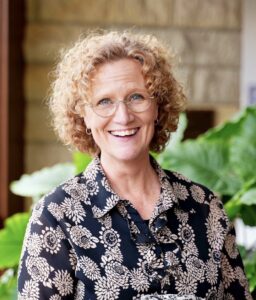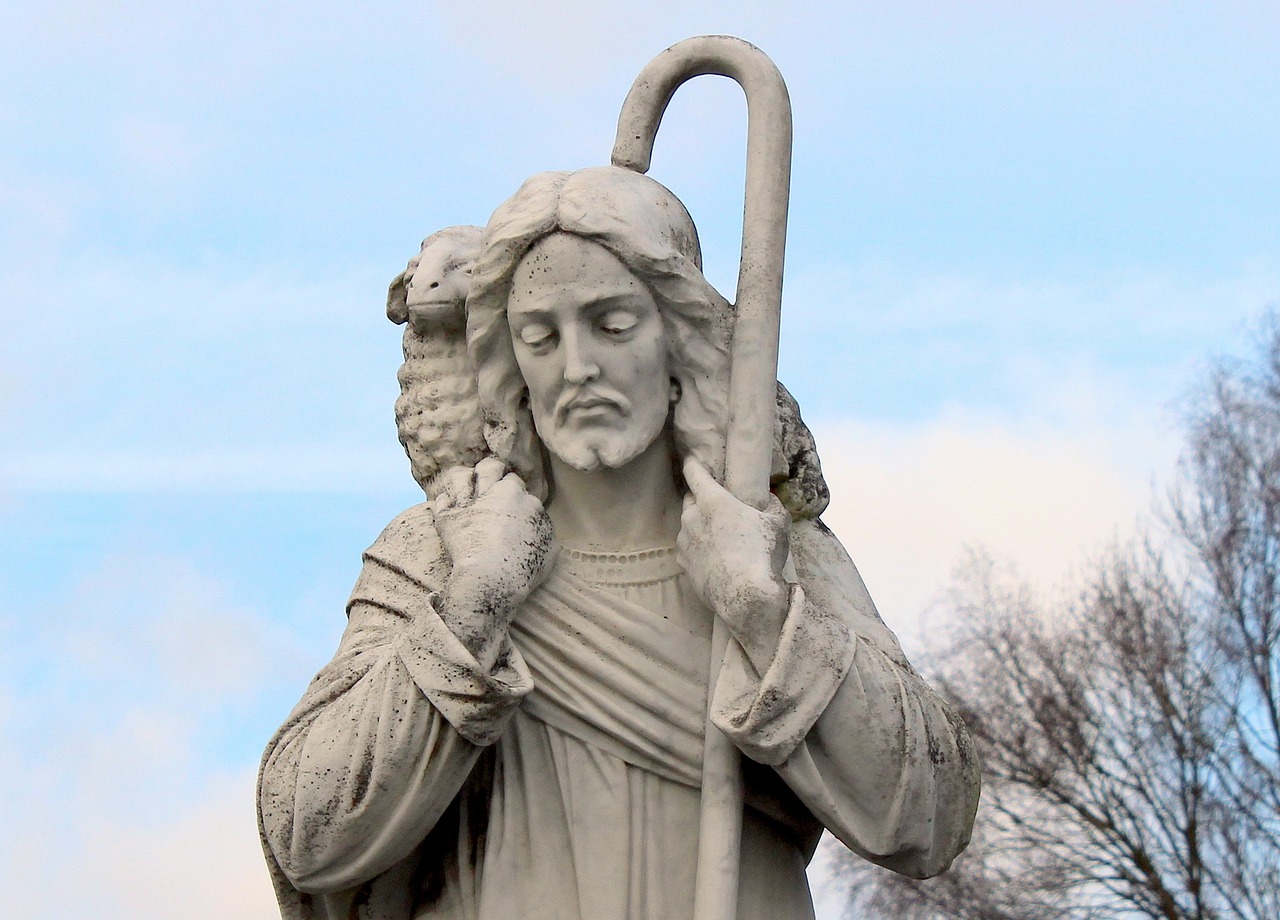Jesus “walked about in the Temple area on the Portico of Solomon”, a specific place in a specific time, with a specific meaning and purpose. The Temple was, according to ancient tradition, built on Mount Moriah, where Abraham was led to sacrifice his son, Isaac (Genesis 22:2), on the site of the threshing floor bought by King David (2 Kings 24), and where he erected an altar to the Lord. The first Temple was built by King Solomon, and a later iteration by Herod.
The Portico was named after Solomon because it was likely built against the same eastern wall Solomon constructed as part of that original Temple; this east boundary of the Temple complex never changed. To the west was the Court of the Gentiles and the Temple itself. To the south was the Royal Porch of Herod, where Jesus sat among the doctors when he was 12 years old (Luke 2:46). To the east was the city wall and the Kidron Valley.
The Portico of Solomon was a grand covered walkway with massive columns, a very significant gathering place for theological discourse and debate. It was here, where great discussions took place, that Jesus taught, visited with people, and shared the Truth. After Pentecost, Peter and John would preach to a large crowd here, and heal the lame man (Acts 3:11-12). It became a gathering place for the early believers (Acts 5:12).
It was here, in a space rich with history and significance, that today’s Gospel takes place. It was Hanukkah. It was cold. And Jesus “walked about.” He was not taking a solitary afternoon stroll; as we’ve seen, this was a place where people gathered and serious debates took place. The Jews gathered around Him to demand an answer to their most pressing issue: “How long are you going to keep us in suspense? If you are the Christ, tell us plainly.” So Jesus told them, plainly: “I told you and you do not believe.”
Then he took it a step further and called them out, saying they are not among His sheep. Speaking even more plainly, He called God his Father, saying, “The Father and I are one.” If we read a little further, we will see that they threatened to stone him to death, the penalty for blasphemy, because He claimed equality with God! He told them plainly, and they refused to accept His answer and tried to eliminate Him. As Jesus said, they do not believe because they are not among his sheep.
Who are His sheep? Those who believe in Him and hear His voice, the voice of Truth. “I know them, and they follow me. I give them eternal life… No one can take them out of my hand.” What consoling words for those who follow the words of the Good Shepherd, and allow Him to lead! If we continue to listen for His voice, no one can take us away from the One who has laid down His life for His sheep.
“Jesús se paseaba por el templo, bajo el pórtico de Salomón”, un lugar específico en un tiempo específico, con un significado y propósito específicos. El Templo fue, según la antigua tradición, construido en el Monte Moriah, donde Abraham fue llevado a sacrificar a su hijo, Isaac (Génesis 22,2), en el sitio del patio de trilla comprado por el Rey David (2 Reyes 24), y donde erigió un altar al Señor. El primer Templo fue construido por el Rey Salomón, y una iteración posterior por Herodes.
El Pórtico recibió el nombre de Salomón porque se supone que fue construido contra el mismo muro oriental que Salomón construyó como parte de ese Templo original; este límite oriental del complejo del Templo nunca cambió. Al oeste estaba el Atrio de los Gentiles y el Templo mismo. Al sur estaba el Pórtico Real de Herodes, donde Jesús se sentó entre los doctores cuando tenía 12 años (Lucas 2,46). Al este estaba la muralla de la ciudad y el Valle de Cedrón.
El Pórtico de Salomón era un gran pasillo cubierto con enormes columnas, un lugar de reunión muy importante para el debate y el discurso teológico. Fue aquí donde tuvieron lugar grandes discusiones, donde Jesús enseñó, visitó a la gente y compartió la Verdad. Después de Pentecostés, Pedro y Juan predicaron aquí a una gran multitud y sanaron al hombre cojo (Hechos 3,11-12). Se convirtió en un lugar de reunión para los primeros creyentes (Hechos 5,12).
Fue aquí, en un espacio rico en historia y significado, donde tiene lugar el Evangelio de hoy. Era Hanukkah. Hacía frío. Y Jesús “paseaba”. No estaba dando un paseo vespertino solitario; como hemos visto, este era un lugar donde la gente se reunía y tenían lugar debates serios. Los judíos se reunieron a su alrededor para exigir una respuesta a su problema más urgente: “¿Hasta cuándo nos vas a tener en suspenso? Si tú eres el Mesías, dínoslo claramente”. Entonces Jesús les dijo claramente: “Ya se lo he dicho y no me creen”.
Luego dio un paso más y los llamó, diciendo que no estaban entre sus ovejas. Hablando aún más claramente, llamó a Dios su Padre, diciendo: “El Padre y yo somos uno”. Si leemos un poco más, veremos que amenazaron con apedrearlo hasta la muerte, el castigo por blasfemia, porque afirmó ser igual a Dios. Se lo dijo claramente, y ellos se negaron a aceptar su respuesta y trataron de eliminarlo. Como dijo Jesús, no creen porque no están entre sus ovejas.
¿Quiénes son sus ovejas? Aquellos que creen en Él y escuchan su voz, la voz de la Verdad. “Yo las conozco y ellas me siguen. Yo les doy vida eterna… Nadie las puede arrebatará de mi mano”. ¡Qué palabras tan consoladoras para quienes siguen las palabras del Buen Pastor y le permiten guiarnos! Si seguimos escuchando su voz, nadie podrá alejarnos de Aquel que dio su vida por sus ovejas.
 Kathryn Mulderink, MA, is married to Robert, Station Manager for Holy Family Radio. Together they have seven children (including Father Rob), and eleven grandchildren. She is President of the local community of Secular Discalced Carmelites and has published five books and many articles. Over the last 30 years, she has worked as a teacher, headmistress, catechist, Pastoral Associate, and DRE, and as a writer and voice talent for Catholic Radio. Currently, she serves the Church by writing and speaking, and by collaborating with various parishes and to lead others to encounter Christ and engage their faith. Her website is www.KathrynTherese.com
Kathryn Mulderink, MA, is married to Robert, Station Manager for Holy Family Radio. Together they have seven children (including Father Rob), and eleven grandchildren. She is President of the local community of Secular Discalced Carmelites and has published five books and many articles. Over the last 30 years, she has worked as a teacher, headmistress, catechist, Pastoral Associate, and DRE, and as a writer and voice talent for Catholic Radio. Currently, she serves the Church by writing and speaking, and by collaborating with various parishes and to lead others to encounter Christ and engage their faith. Her website is www.KathrynTherese.com
Feature Image Credit: Myriams-Fotos, pixabay.com/photos/jesus-the-good-shepherd-1167493/
The views and opinions expressed in the Inspiration Daily blog are solely those of the original authors and contributors. These views and opinions do not necessarily represent those of Diocesan, the Diocesan staff, or other contributors to this blog.

